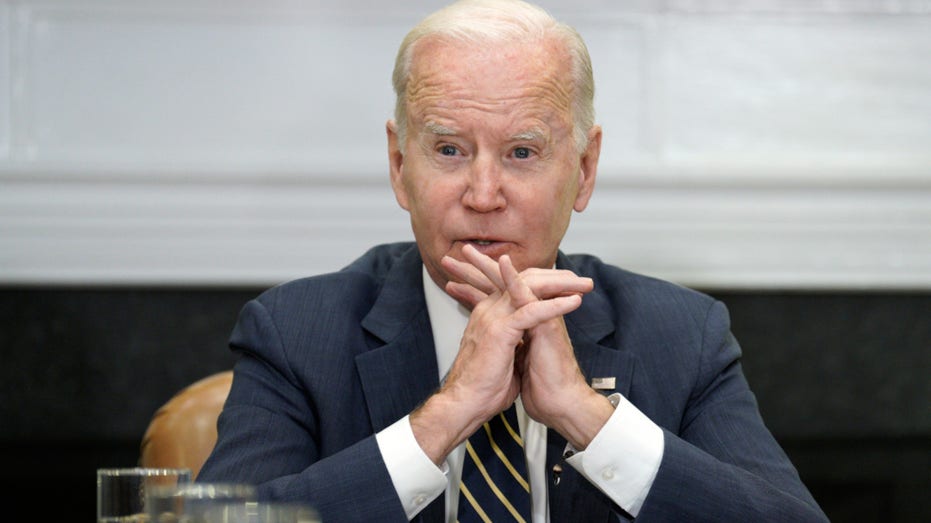UBS Wealth Management SVP Brenda O’Connor Juanas and the Lonski Group founder John Lonski discuss the earnings season and share their market outlook for 2024 on ‘Mornings with Maria.’
Interest payments on the nation’s ballooning debt just eclipsed spending on defense and Medicare, worrying policy experts who have warned this threatens to undermine U.S. economic stability.
In the first seven months of fiscal year 2024, which began in October, spending on net interest surged to $514 billion, surpassing spending on both national defense ($498 billion) and Medicare ($465 billion). In fact, interest costs have topped spending on veterans, education and transportation combined.
“Rising debt will continue to put upward pressure on interest rates,” the Committee for a Responsible Federal Budget (CRFB), a nonpartisan group that advocates for lowering the national deficit, said in a statement. “Without reforms to reduce the debt and interest, interest costs will keep rising, crowd out spending on other priorities and burden future generations.”
NATIONAL DEBT TRACKER: AMERICAN TAXPAYERS (YOU) ARE NOW ON THE HOOK FOR $34,534,845,450,747.16
For years, the U.S. was able to borrow cheaply, thanks to historically low interest rates. However, as the federal funds rate increased, so did short-term rates on Treasury securities, making federal borrowing far more expensive.
The Federal Reserve raised interest rates 11 times in 2022 and 2023, lifting rates to the highest level in 23 years in an attempt to crush high inflation and cool the economy. Policymakers have signaled they will hold rates at those elevated levels until they are certain inflation is conquered.
Federal Reserve Chairman Jerome Powell speaks at the Thomas Laubach Research Conference in Washington, D.C., on May 19, 2023. (Win McNamee/Getty Images / Getty Images)
Spending on interest is now the second-largest line item in the budget and is expected to remain so for the duration of 2024. By 2051, it is projected to become the most expensive part of the budget.
“Rising interest costs will crowd out other possible uses of government resources, and then also pose a risk to our economic stability,” said CBO Director Phillip Swagel while testifying on Capitol Hill in February.
SOARING DEFICITS TO PUSH PUBLICLY HELD DEBT TO RECORD LEVEL IN 4 YEARS
Interest rates are not the only factor making servicing the debt more expensive. Over the past decade, the size of the national debt has more than quadrupled. From just four decades ago, the debt skyrocketed from $907 billion to more than $34.5 trillion as of Wednesday afternoon, according to the latest Treasury Department figures.
The spike in the debt comes after a burst of spending by President Biden and Democratic lawmakers.

President Biden has repeatedly defended the spending by his administration. (Yuri Gripas/Abaca/Bloomberg via Getty Images / Getty Images)
As of September 2022, Biden had already approved roughly $4.8 trillion in borrowing, including $1.85 trillion for a COVID relief measure dubbed the American Rescue Plan and $370 billion for the bipartisan infrastructure bill, according to the CRFB.
HOW MUCH DEBT IS TOO MUCH DEBT?
While that is about half of the $7.5 trillion that former President Trump added to the deficit while he was in office, it is far more than the $2.5 trillion Trump had approved at that same point during his term.

Former President Trump speaks to reporters before his speech at the annual Conservative Political Action Conference on March 4, 2023. (Anna Moneymaker/Getty Images / Getty Images)
Biden has repeatedly defended the spending by his administration and boasted about cutting the deficit by $1.7 trillion.
“I might note parenthetically: In my first two years, I reduced the debt by $1.7 trillion. No president has ever done that,” Biden said recently.
GET FOX BUSINESS ON THE GO BY CLICKING HERE
However, that figure refers to a reduction in the national deficit between fiscal years 2020 and 2022; while the deficit did shrink during that time period, that is largely because emergency measures put into place during the COVID-19 pandemic expired.
Credit: Source link




